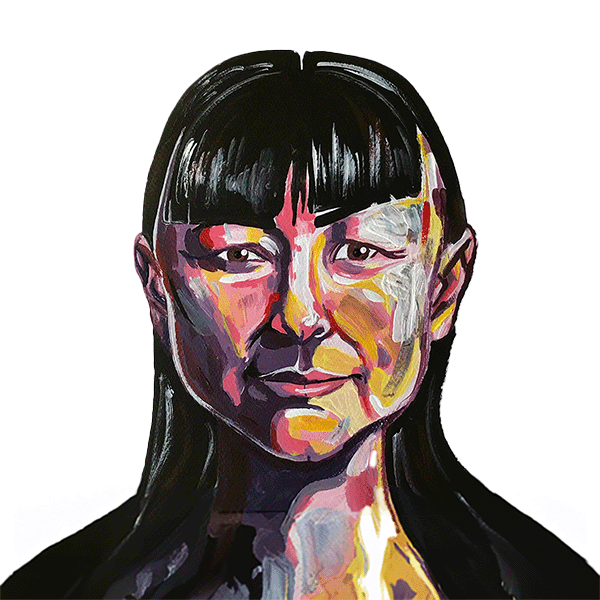Spotify’s People Analytics Journey

..future of work if you care to dare
We have made quite the journey in our people analytics work over the past years. To guide us, we have three beliefs, four bets, and a beacon. Let’s start with our three beliefs;
- We can move much faster, have a bigger impact and throughput by opening the gateways between the data sets and let the analysis flow freely
- We believe in being data-informed, not data-led
- We are convinced, and our experience confirms, that relevant and business-connected HR is hard to copy
2017: Lots of data but no story
Back in 2017, we had lots of data but no real story to tell, and no cross-functional analysis was made. We, the Spotify HR team, had a great opportunity there, we had access to loads and loads of data and information. But that data was mostly just collected and stored. Not a lot of actions were taken or impact made based on this data, to be honest.
The reality of the situation was that a lot of the data was corrupt and had no clearly defined owner. The handling of the data had become over-engineered, and much hope was invested in finding a magical system that would solve all our problems and needs.
Team-within-the-team-based deliveries made us suffer. There was a lack of company-wide initiatives based on our data. Most of the time, we were just presenting KPIs. The struggle with cleaning the input and washing the output was constant, and we found ourselves in a data fatigue state of mind. We were only doing maintenance, support, and reporting. Just like in many other HR teams, “data storerooms” emerged where the good findings where kept, secure. This killed most of our cross-functional findings, execution, and strategic initiatives before they even came to life. Very few people had real access, and very little ever left the storyboard. And, like many others, we seemed to be stuck in the area of TA analytics, when people analytics can, and should, be so much more.
As the amount of typical people analytics buzzwords grew externally, the internal analytics initiatives that would truly impact the business didn’t. We were in constant hyper-growth, our operations became bigger and more complex every day. Slowly, we were stepping away from the strategy that had made us successful: “think it, build it, ship it and tweak it”. And that made us lock the doors between our data sets, rather than enable a smooth and steady ride in the flight of locks.
2018: Making changes
In early 2018, our HR Lead Team acknowledged that we needed to tweak our analytics operations in order to have a nimble and business-focused HR Insights team. These are the four bets that the team made:
1. Dare to Simplify
Dare to challenge the trend of making HR analytics more complex than it is. Instead, go back to the why and look at what you are trying to solve for. Put smart people on the issue, cross-run the data and dare to trust your intuition. Putting your experience to use will take you a long way.
Don’t use unhealthy over-engineered processes or let external consultants scope what only you, the internal expert, can envision. Instead, A/B test your data warehouse model, iterate, tweak, and tweak again. Perfect is a nirvana state of mind. It’s what we aim for but it won’t start moving the needle today.
2. No Tech Anxiety
The train has not left the platform and we are positioned well even if we have most of the journey in front of ourselves. There is no reason for panicky carbon-copies of what others are doing, or for having expensive consultants come in to “save the day”.
Don’t get HR Tech confused with HR Systems or Workplace Tech. The arena is huge, the HR Tech Expos endless, and some will call any system with HR connection “HR Tech”. Don’t worry about that, just keep doing what you’re good at and wait for HR Tech to become real. The relevance of this technology is maturing, but slower than some of the “HR Tech” salespeople would have you believe. Don’t be tech-adverse, but remember that we haven’t really seen anything yet.
3. Data and Experience
Data and Intuition are often seen as polarities. But don’t choose, you need both! As soon as we cracked the code of balancing these two we found ourselves with a nimbler and much more pragmatic way of noodling our Data, Insight, Beliefs, and Bets (DIBBs). This is the main reason we talk so much about being data-informed instead of data-led. That’s what allows you to make contrarian bets built on data and intuition (or, as one can also call it: experience). Never rely on just one of the two. Combine them and pressure test them both separate and together using sentences like both, and…
4. Storytelling is King
Choose, and commit to, the most important initiatives. The ones that drive change and impact on your way of working. Data is great, but it won’t move mountains on its own; it needs connecting the dots, context, a great story, experience, and a bet. We will for sure be doing more People Analytics in the future, but there will not necessarily be more analysts within HR.
Data sets that are kept isolated within their own lock are nice to have, but their use is very limited. The story is close to impossible to tell and engage. The trick is to open the doors between the locks, combine the data sets and allow the analysis to flow freely between them, just like water in a canal. That way your data can really take you from one place to another, to a higher level and help drive change, development, and growth.
2019: Making it easy again
So, where are we today? Well, as soon as we found our model, it was simple. The over-complicated series of datasets have been opened up and set free to flow in areas like where to grow, Talent Management, manager effectiveness, Leadership Index success correlations, work-life improvements, etc. It goes on and on. The harmonized mix of data and experience is now used to drive and change behavior to build out our business. This is cross HR-functional strategic execution in action.
Access to this free-flowing data has made the entire HR Lead team engaged and front-leaning in this arena, and they’re doing their part in putting the data sets together, drawing conclusions and sharing their findings. The HR Insights team is reinventing themselves and growing slightly. This work is no longer a tick in the reporting box, instead, it’s vital and exciting and highly collaborative. We find ourselves putting insights into actions and being confirmed in previous decisions as well as in new without spending more time on admin.
HR Tech, AI, Automatisation, AR, VR and replacing an old ATS is on our agenda too. But it’s not a question about digitalization, or about digitizing (Spotify has never been anything but digital).
What is often called “HR Tech” today as stated before, is what was called People Systems yesterday. Introducing or replacing a system does not constitute a transformation or a big deal. It’s a lot of work, and it may be necessary, but it’s still just about removing a blocker and not something that will really move the needle. It’s Workplace Tech, not HR Tech.
AI, on the other hand, is already here. It’s used where it helps, supports and saves time; It can minimize unqualified repetitive work and answers. It’s all interrelated of course, but these things should not be mixed up or confused with People Analytics and HR Insights as such.
Going forward: Our beacon
We have set our aim in a short term plan and a long time vision. In the (near) future the beacon will shine its light on our HR Insights path. The work should be framed by; bravery, responsibility and opening the pools of information in a systematic order, learning and adapting operating models for the business to evolve informed decisions while building out the business. The data should be continuously discussed, challenged and pressure tested. Helping us to take better and more informed people and business decisions.



